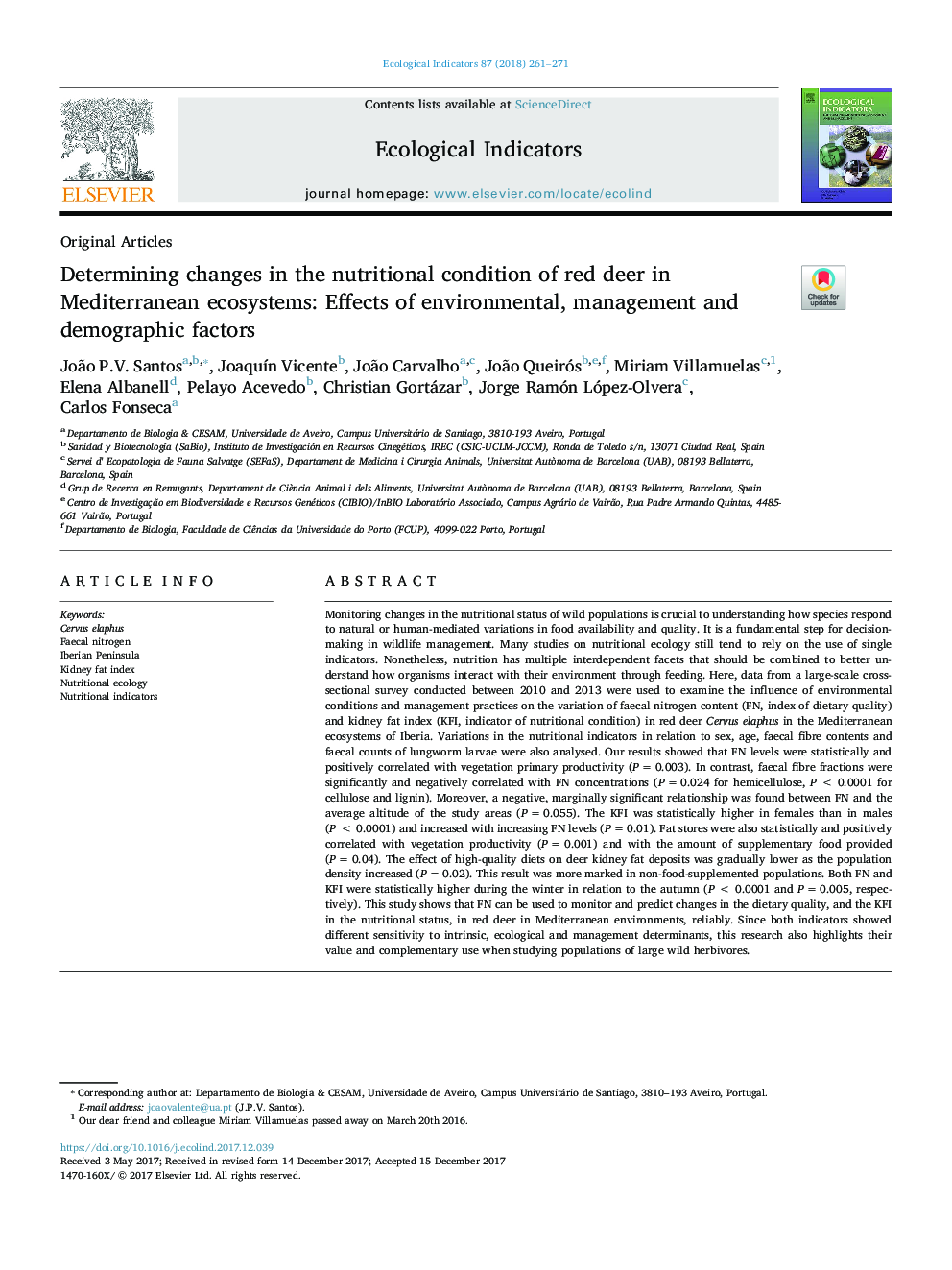| کد مقاله | کد نشریه | سال انتشار | مقاله انگلیسی | نسخه تمام متن |
|---|---|---|---|---|
| 8845593 | 1617115 | 2018 | 11 صفحه PDF | دانلود رایگان |
عنوان انگلیسی مقاله ISI
Determining changes in the nutritional condition of red deer in Mediterranean ecosystems: Effects of environmental, management and demographic factors
ترجمه فارسی عنوان
تعیین تغییرات در شرایط تغذیه گوزن های قرمز در اکوسیستم های مدیترانه: تاثیر عوامل محیطی، مدیریتی و جمعیت شناختی
دانلود مقاله + سفارش ترجمه
دانلود مقاله ISI انگلیسی
رایگان برای ایرانیان
کلمات کلیدی
سرووس ایلافوس، نیتروژن مایع شبه جزیره ایبری، شاخص چربی کلیه، محیط زیست تغذیه، شاخص های تغذیه،
موضوعات مرتبط
علوم زیستی و بیوفناوری
علوم کشاورزی و بیولوژیک
بوم شناسی، تکامل، رفتار و سامانه شناسی
چکیده انگلیسی
Monitoring changes in the nutritional status of wild populations is crucial to understanding how species respond to natural or human-mediated variations in food availability and quality. It is a fundamental step for decision-making in wildlife management. Many studies on nutritional ecology still tend to rely on the use of single indicators. Nonetheless, nutrition has multiple interdependent facets that should be combined to better understand how organisms interact with their environment through feeding. Here, data from a large-scale cross-sectional survey conducted between 2010 and 2013 were used to examine the influence of environmental conditions and management practices on the variation of faecal nitrogen content (FN, index of dietary quality) and kidney fat index (KFI, indicator of nutritional condition) in red deer Cervus elaphus in the Mediterranean ecosystems of Iberia. Variations in the nutritional indicators in relation to sex, age, faecal fibre contents and faecal counts of lungworm larvae were also analysed. Our results showed that FN levels were statistically and positively correlated with vegetation primary productivity (Pâ¯=â¯0.003). In contrast, faecal fibre fractions were significantly and negatively correlated with FN concentrations (Pâ¯=â¯0.024 for hemicellulose, Pâ¯<â¯0.0001 for cellulose and lignin). Moreover, a negative, marginally significant relationship was found between FN and the average altitude of the study areas (Pâ¯=â¯0.055). The KFI was statistically higher in females than in males (Pâ¯<â¯0.0001) and increased with increasing FN levels (Pâ¯=â¯0.01). Fat stores were also statistically and positively correlated with vegetation productivity (Pâ¯=â¯0.001) and with the amount of supplementary food provided (Pâ¯=â¯0.04). The effect of high-quality diets on deer kidney fat deposits was gradually lower as the population density increased (Pâ¯=â¯0.02). This result was more marked in non-food-supplemented populations. Both FN and KFI were statistically higher during the winter in relation to the autumn (Pâ¯<â¯0.0001 and Pâ¯=â¯0.005, respectively). This study shows that FN can be used to monitor and predict changes in the dietary quality, and the KFI in the nutritional status, in red deer in Mediterranean environments, reliably. Since both indicators showed different sensitivity to intrinsic, ecological and management determinants, this research also highlights their value and complementary use when studying populations of large wild herbivores.
ناشر
Database: Elsevier - ScienceDirect (ساینس دایرکت)
Journal: Ecological Indicators - Volume 87, April 2018, Pages 261-271
Journal: Ecological Indicators - Volume 87, April 2018, Pages 261-271
نویسندگان
João P.V. Santos, JoaquÃn Vicente, João Carvalho, João Queirós, Miriam Villamuelas, Elena Albanell, Pelayo Acevedo, Christian Gortázar, Jorge Ramón López-Olvera, Carlos Fonseca,
